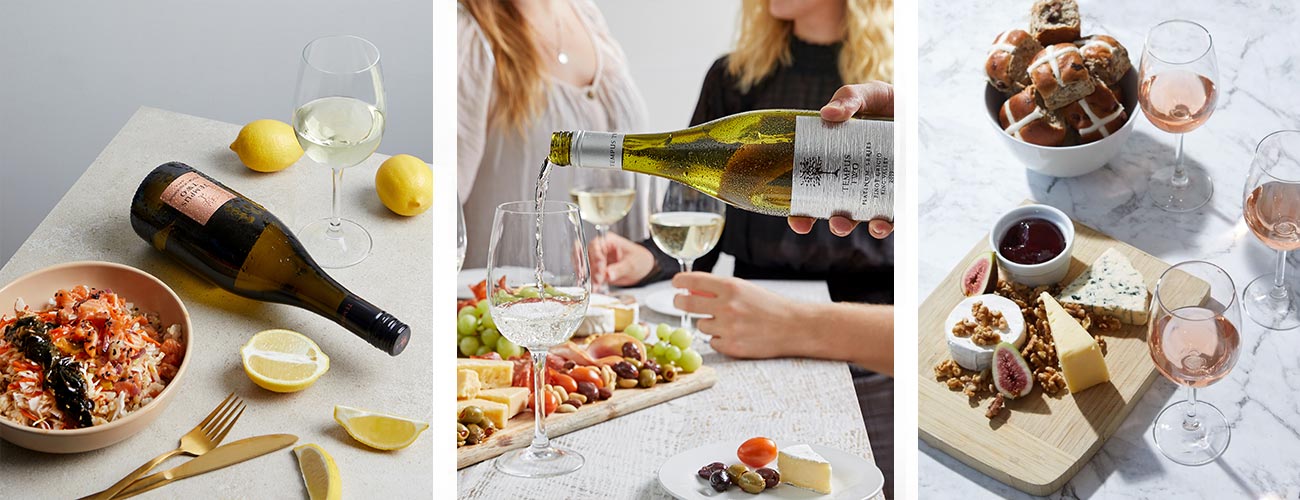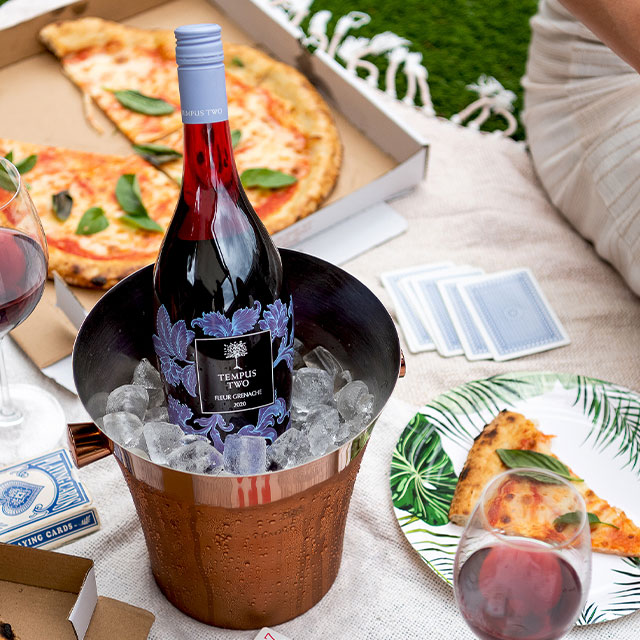



Drinking wine is enjoyable at any time; whether it’s a glass of Sauvignon Blanc with dinner after a long day or a Grenache mixed into a sangria shared with friends over a summery lunchtime shindig.
Regardless of when and where, it can’t be denied that drinking wine is an experience. And a simple way to elevate this experience (and make it look like you’re an aspiring sommelier, fancy!) is by storing wine and serving wine correctly, giving it longevity and offering you every flavour and aroma your wine has to offer.
Serving and drinking wine is often a whole-body experience, from the tingle of champagne bubbles on your tongue while at a party to the pride you feel when you’ve learnt how to serve a pinot noir with the perfect triple cream brie. There are no hard and fast rules when it comes to how to serving wine, but there are some rules of thumb that can boost the flavour of your wine and make you look like a wine expert.
This is important when serving wine and can change the entire experience. When serving red wine, for example, having a larger surface area of the wine exposed to the oxygen in a bigger bowl allows the wine to release its volatiles. From here the shape of the glass funnels the concentrated aromas towards your nose, while the stem allows you to agitate the wine, further breaking the surface tension and releasing more volatiles, giving you the richest possible flavour from your wine.
DON’T: Don’t take pairing glasses and wine overly seriously, if you like serving wine in a camping mug, then don’t let anyone stop you.

The ultimate way to look like a wine expert is serving wine that matches the meal, as nothing speaks to a whole-body sensory experience like a good Cabernet Sauvignon and lamb roast while listening to some jazz. It’s all about the flavours complementing each other to perfection, so ideally your wine will be more acidic, sweeter and the same flavour intensity as the food it is matching.
DON’T: Don’t forget to think about sauces on meals when pairing wine and food. This can often be forgotten and you can experience a big taste clash as the dominant meal component is forgotten in the pairing.
Serving wine that has been decanted serves two purposes; firstly it separates your wine from the sediment in the bottle so the wine will appear pristine in your glass, and secondly, decanting wine allows it exposure to oxygen causing volatiles to evaporate and aromas to be released.
DON’T: Don’t rush decanting, enjoy the process and savour the anticipation and smell of that delicious vino. And if you don’t have a decanter don’t worry, the wine doesn’t know what it’s being poured into, so you can decant it into anything from the empty jug of your blender to that beautiful glass vase you’ve had sitting on the shelf forever.

A big “DO” is serving wine at the ideal temperature, which can double the flavour. The right temperature is all about the taste of the wine; generally, a higher temperature for a red allows its aromas to fill the glass and a cooler white allows you to enjoy their delicate nose and acidity.
DON’T: Don’t neglect to research your wine! Tempus Two Graphite Grenache, for example, is a red that bucks the trend and can be served at room temperature or chilled to bring out its gamut of summer fruity flavours.
If you are able to not indulge immediately in the delicious liquid gold of your wine purchase then an investment like 2017 Tempus Two Uno Shiraz Pinot Noir which is hand-selected and only made in exceptional vintages, in limited quantities, should be handled with care in order to maximise the cellaring process. There are a few simple tricks to storing wine at home which mean that when it’s time to crack it open, your wine is in peak condition.
Both light and heat can interfere with the delicate process of a wine as it ages. Too much heat and the wine will age rapidly and can spoil, too cold and the wine can freeze. UV rays can also decay your wine, so the darker the storage location, the better. Don’t forget that this goes for whites as well as reds; Tempus Two Hunter Valley Semillon is a wine that changes over time and shouldn’t be left out on a countertop or in a wine rack near a window, instead it should be cellared with the same reverence as a serious red.
Closures matter, if it’s under screwcap, store it however you want, however, if, under a cork, a wine cork can dry out and shrink, allowing in oxygen in and spoiling the wine, storing wine on its side so the liquid is in contact with the cork reduces possible spoilage.
Good wine should be enjoyed! However, if you are keen to keep a bottle or two for a little while longer, then you need to consider how you store it to ensure the quality is not compromised. While we drink red wine at a higher temperature than a chilled white or sparkling, it still needs to be stored at the same cool temperature. . The perfect temperature for storing wine long term is 13°C, but anywhere between 7°C and 18°C degrees would be fine. (add) Consistency of temperature is key, so ideally don’t store your wine in your kitchen or other areas where the temperature fluctuates. This stops the wine from spoiling and gives it maximum longevity.
No one wants to waste wine, and as rare as it is, there are times when we don’t finish a bottle. Rest assured, there is no harm in storing wine that has already been opened for consumption another day. Wine can keep from 1-4 days once opened, depending on the type of wine and your method of storing wine. Sparkling wine will last from 1-3 days in the fridge, provided it is re-corked or stoppered however, the bubbles of sparkling wine are quick to escape once the cork is popped. Red and full-bodied white wines can last from 3-5 days once opened, providing they are resealed and refrigerated (for the white) while a fortified wine can be re-corked and returned to a cool, dark place for as long as 28 days. The key is to create an airtight seal with whatever you use to stop the bottle with, be it the original cork, lid or a custom wine stopper.
